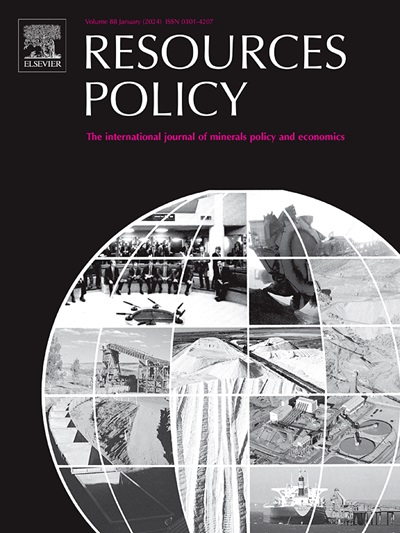Energy, critical minerals, and precious metals: Navigating interconnectedness and portfolio strategies in investment risk management
IF 10.2
2区 经济学
0 ENVIRONMENTAL STUDIES
引用次数: 0
Abstract
Commodity markets are becoming increasingly interdependent, exposing investors and policymakers to systemic risks that intensify during financial crises, geopolitical shocks, and the global energy transition. However, most analyses examine energy, critical minerals, and precious metals in isolation, overlooking how shocks in one market propagate to others. This study addresses this gap by integrating these three asset classes into a single connectedness framework. Using a Quantile Vector Autoregression (QVAR) model and monthly data from January 1984 to December 2024, the results show that energy commodities consistently act as the primary transmitters of spillovers, while critical minerals and precious metals play a dual role, sometimes cushioning portfolios against shocks, but at other times amplifying contagion depending on macroeconomic conditions. Evidence from the Total Connectedness Index and network visualisations highlights shifting spillover patterns, with systemic risk concentrated in coal, aluminium, copper, and silver. Portfolio-based cumulative return analysis further demonstrates that incorporating critical minerals and precious metals enhances resilience against energy-driven volatility. Robustness checks across three- and five-year horizons confirm these dynamics. These findings underscore the need to manage commodity interdependencies to mitigate systemic risk, strengthen financial stability, and build resilient investment strategies in an era of accelerating energy transition and heightened resource dependency.
能源、关键矿产和贵金属:在投资风险管理中的互联性和投资组合策略导航
大宗商品市场正变得越来越相互依赖,使投资者和政策制定者面临系统性风险,这种风险在金融危机、地缘政治冲击和全球能源转型期间会加剧。然而,大多数分析孤立地考察能源、关键矿物和贵金属,忽视了一个市场的冲击如何传播到其他市场。本研究通过将这三种资产类别整合到一个单一的连通性框架中来解决这一差距。使用分位向量自回归(QVAR)模型和1984年1月至2024年12月的月度数据,结果表明,能源商品一直是溢出效应的主要传播者,而关键矿产和贵金属则发挥双重作用,有时可以缓冲投资组合抵御冲击,但有时会根据宏观经济条件放大传染。来自总连通性指数和网络可视化的证据表明,溢出模式正在发生变化,系统性风险集中在煤炭、铝、铜和银。基于投资组合的累积回报分析进一步表明,纳入关键矿产和贵金属可以增强抵御能源驱动波动的弹性。3年和5年的稳健性检查证实了这些动态。这些研究结果强调,在能源转型加速和资源依赖度提高的时代,需要管理大宗商品的相互依赖性,以减轻系统性风险,加强金融稳定性,并建立有弹性的投资战略。
本文章由计算机程序翻译,如有差异,请以英文原文为准。
求助全文
约1分钟内获得全文
求助全文
来源期刊

Resources Policy
ENVIRONMENTAL STUDIES-
CiteScore
13.40
自引率
23.50%
发文量
602
审稿时长
69 days
期刊介绍:
Resources Policy is an international journal focused on the economics and policy aspects of mineral and fossil fuel extraction, production, and utilization. It targets individuals in academia, government, and industry. The journal seeks original research submissions analyzing public policy, economics, social science, geography, and finance in the fields of mining, non-fuel minerals, energy minerals, fossil fuels, and metals. Mineral economics topics covered include mineral market analysis, price analysis, project evaluation, mining and sustainable development, mineral resource rents, resource curse, mineral wealth and corruption, mineral taxation and regulation, strategic minerals and their supply, and the impact of mineral development on local communities and indigenous populations. The journal specifically excludes papers with agriculture, forestry, or fisheries as their primary focus.
 求助内容:
求助内容: 应助结果提醒方式:
应助结果提醒方式:


